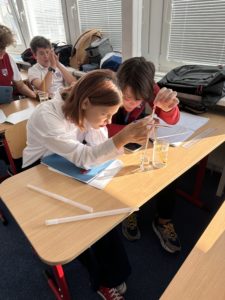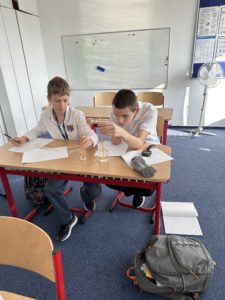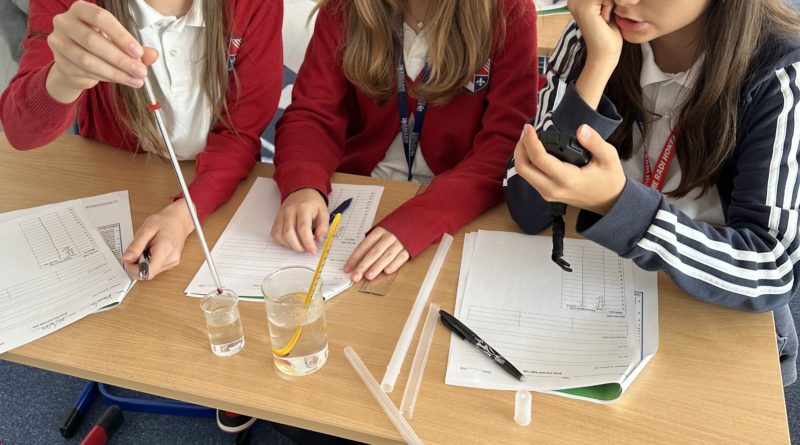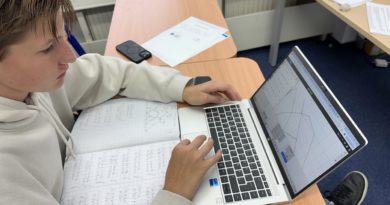STEM in Year 8 Science: Investigating Heat Loss and Body Size
In Year 8 science, students have been diving deep into the world of STEM, exploring how body size affects the rate of heat loss in animals. This hands-on investigation provided them with an exciting opportunity to experiment and engage with scientific concepts in a practical and creative way.

The experiment involved two beakers, one larger and one smaller, to represent different body sizes. Both beakers were filled with hot water, and the students measured the temperature of each at regular intervals. The goal was to see how the size of the beaker impacted the rate of heat loss, simulating how animals of different sizes lose heat in their natural environments. The concept of surface area to volume ratio was a key focus, as it directly affects heat retention—smaller objects with a higher surface area relative to their volume lose heat faster than larger ones.

Throughout the lesson, students recorded their findings, compared results, and discussed how this scientific principle plays a role in the survival of animals, particularly in extreme climates. They learned why larger animals, like polar bears, retain heat more efficiently than smaller animals, which tend to lose heat more rapidly due to their higher surface area to volume ratio.

The classroom was filled with lively discussions as students analyzed their data, collaborated in groups, and reflected on how this experiment relates to real-world biology and physics. This exercise not only strengthened their understanding of heat transfer and body size but also honed their critical thinking and scientific reasoning.
By conducting this experiment, students gained valuable insights into the world of STEM, preparing them for more complex scientific challenges in the future. They developed key skills such as data collection, analysis, and teamwork, which are essential for their academic growth. Lessons like this not only make science fun and engaging but also lay the foundation for success in their future studies and beyond.



